The IRS has recently released a new draft of Form 6765, “Credit for Increasing Research Activities,” aimed at expanding the reporting requirements that taxpayers must fulfill to substantiate their R&D claims. The reporting requirements are part of the new sections E and G of the Form and are summarized here:
- Section E – Other information: asks taxpayers to provide:
-
- The number of business components involved during the tax year
- The amount of officers’ wages included in Qualified Research Expenses (QREs)
- Information on acquisitions and dispositions
- Information on any new categories of expenses generating QREs
- Indication of whether any QREs were determined under the Accounting Standards Codification (ASC) 730 Directive (see below)
This section serves as a precursor to sections F and G and is designed to require minimal additional time for taxpayers to complete.
- Section G – Business Component Information: asks taxpayers to report on the business components that account for 80% of the total QREs as follows:
-
- Report no more than 50 business components or an equivalent of 80%, whichever comes first
- If there are more than 50 business components, the remaining component’s activities must be aggregated as “Aggregate BC”
This section is an overhaul of its prior version and is designed to have the taxpayer clearly outline the details behind the business components that give rise to the QREs. This type of disclosure was historically only required at the time a tax return was amended to include an R&D credit claim that was not reported on the originally filed return. This section is optional for 2024 and will be mandatory for all starting in 2025, with the following exceptions:
- Qualified Small Business (QSB) taxpayers, defined under section 41(h)(1) & (2) of the Internal Revenue Code, who check the box to claim a reduced payroll tax credit.
- Taxpayers with QREs equal to or less than $1.5 million, determined at the control group level and equal to or less than $50 million of gross receipts claiming a research credit on an original filed return.
WG observation: While the R&D credit itself remains unchanged, the level of detail required to substantiate the credit is undergoing significant revisions. As noted earlier, there are exceptions to the additional reporting mandated by Section G. Another valuable option is the ASC 730 Directive, addressed in Section E, line 41.
ASC 730 is an accounting standard used to report R&D expenditures properly under Generally Accepted Accounting Principles (GAAP). The IRS “borrowed” this approach starting in 2017 when it first introduced the ASC 730 Directive to provide a standardized methodology for determining QREs based on a certified audited financial statement. It was originally created to reduce the administrative burden on the taxpayer and IRS during an examination.
However, with the introduction of the recent Form 6765 changes, the ASC 730 Directive provides an opportunity for the taxpayer to eliminate a substantial amount of reporting on section G if certain criteria are met. Specifically, if the amount reported on Section E, Line 41, constitutes at least 80% of the total QREs reported on Section F, Line 48, then taxpayers are exempt from reporting their business components in Section G, resulting in considerable time savings. However, eligibility for the ASC 730 Directive is subject to specific restrictions:
- Taxpayer’s assets must be equal to or greater than $10 million
- Taxpayer must also prepare a US GAAP-based certified audited financial statement
Taxpayers who incur a material amount of research expenses should review the updated Form 6765 both to understand the heightened documentation that will need to be included with their tax filing and also to consider if the ASC 730 Directive could lead to significant time savings if audited financial statements are also issued.
If you have questions or require additional information, please contact your WG advisor.





